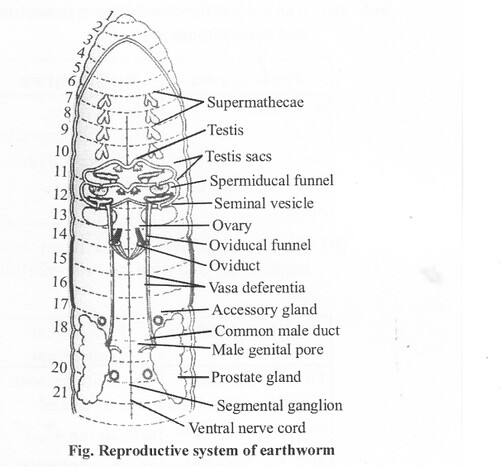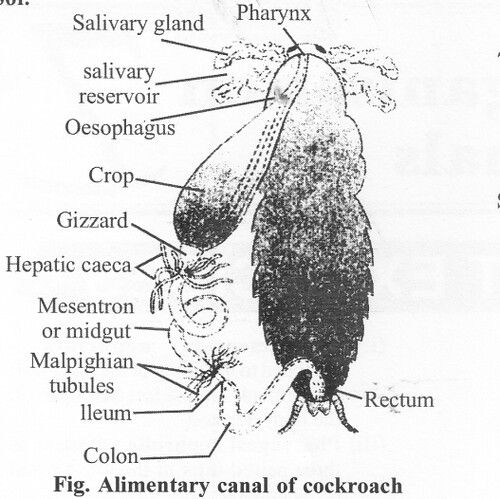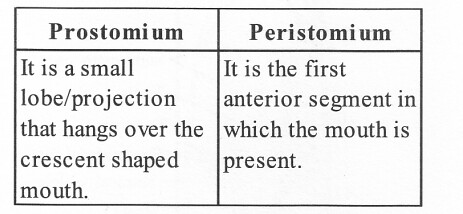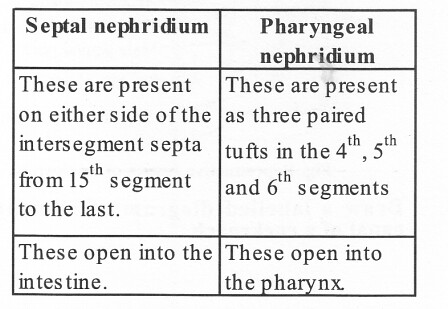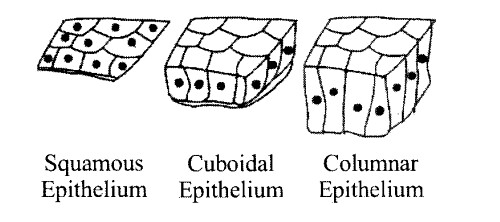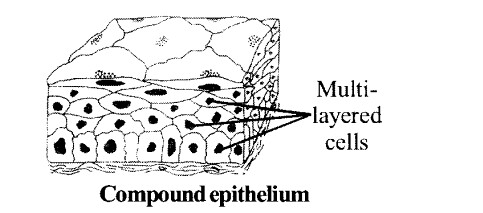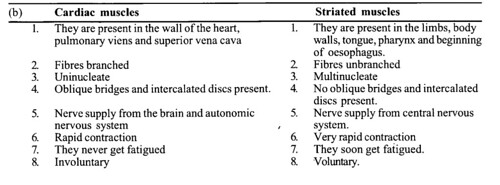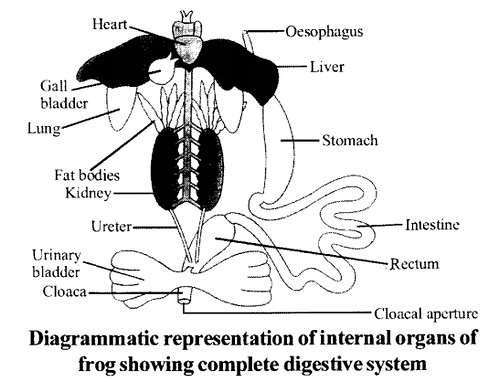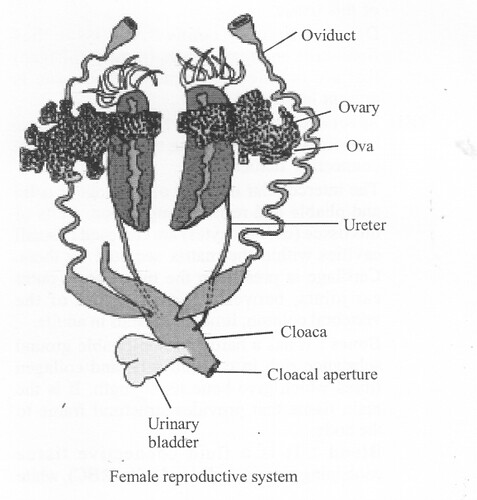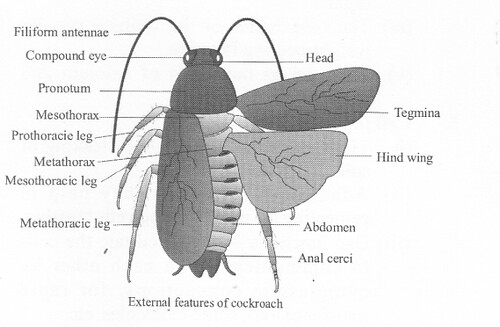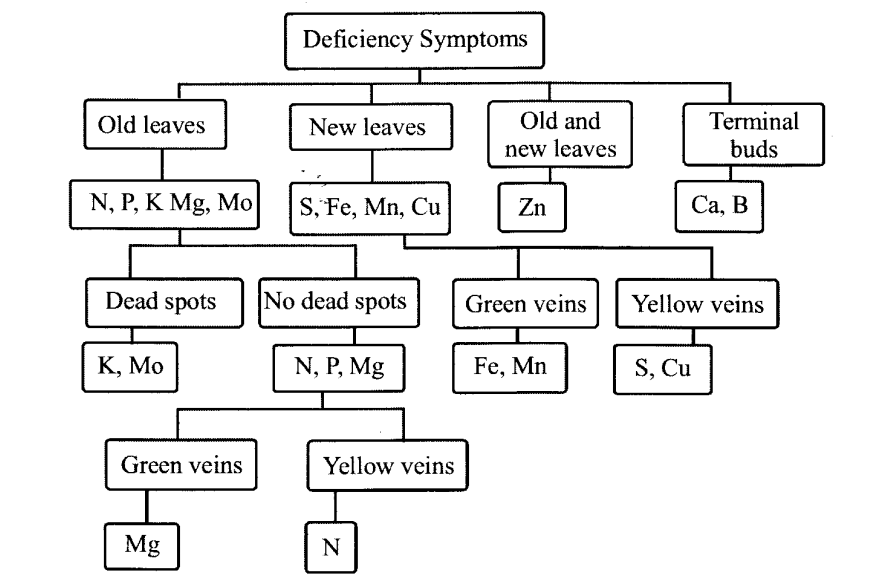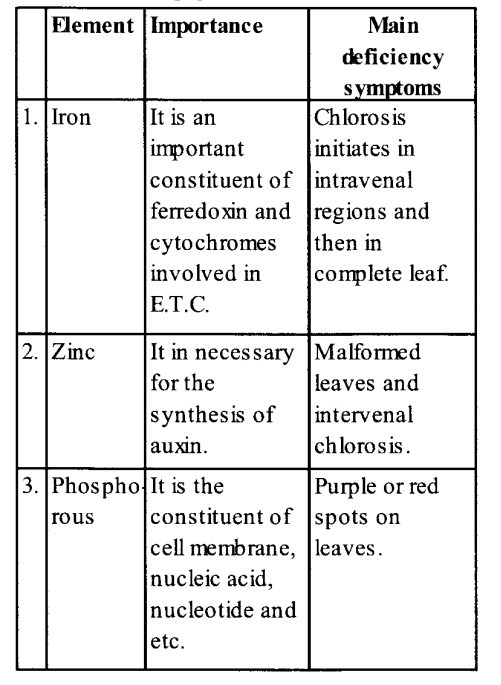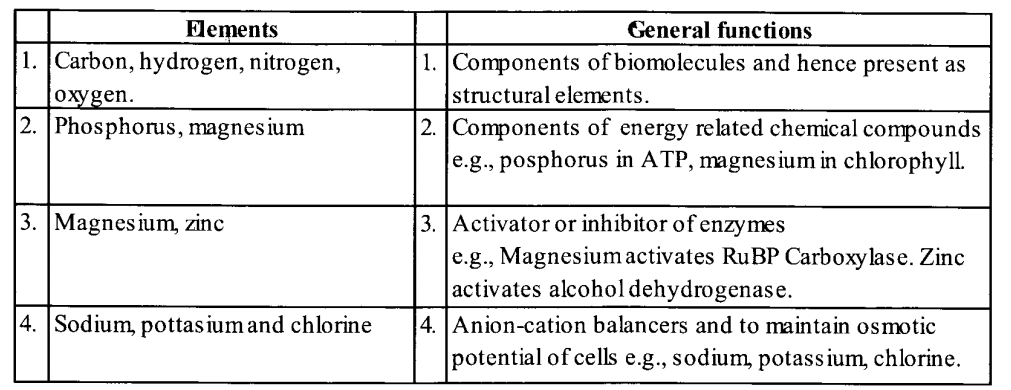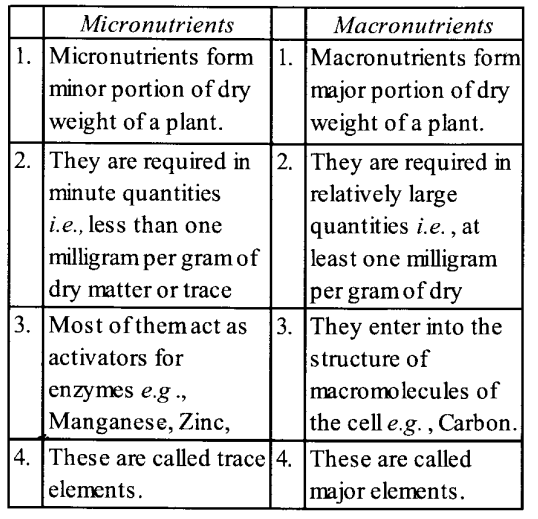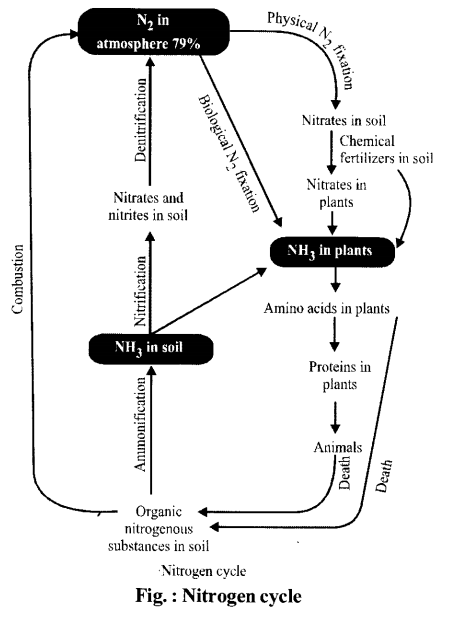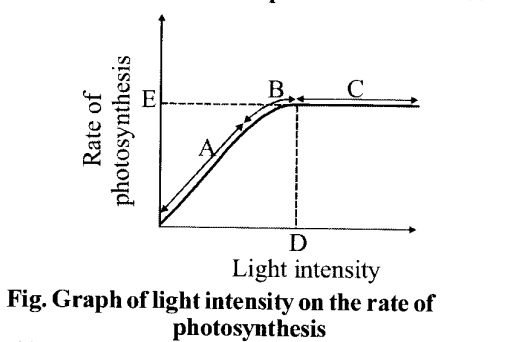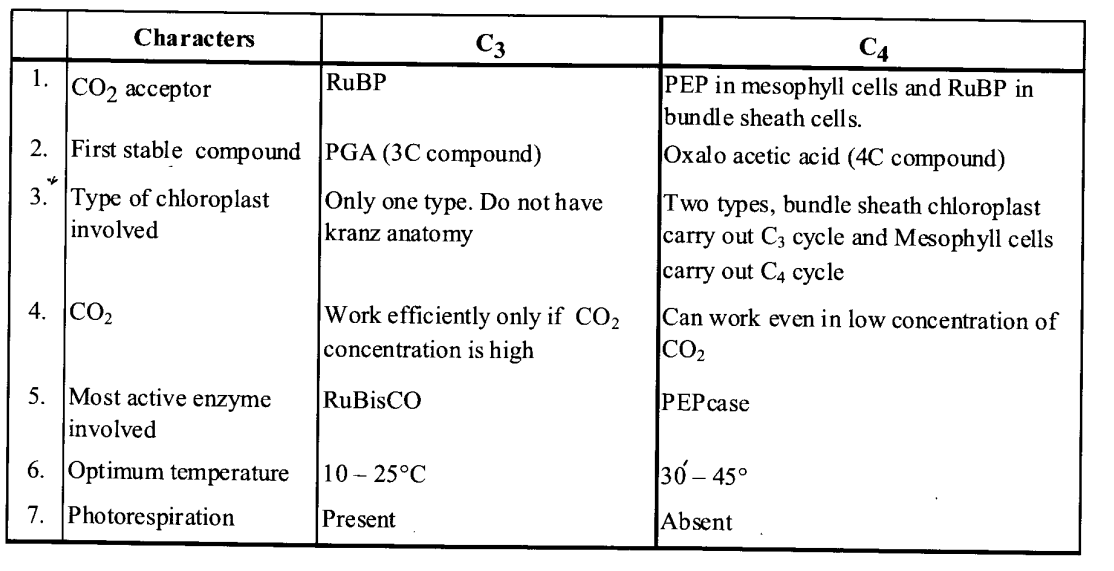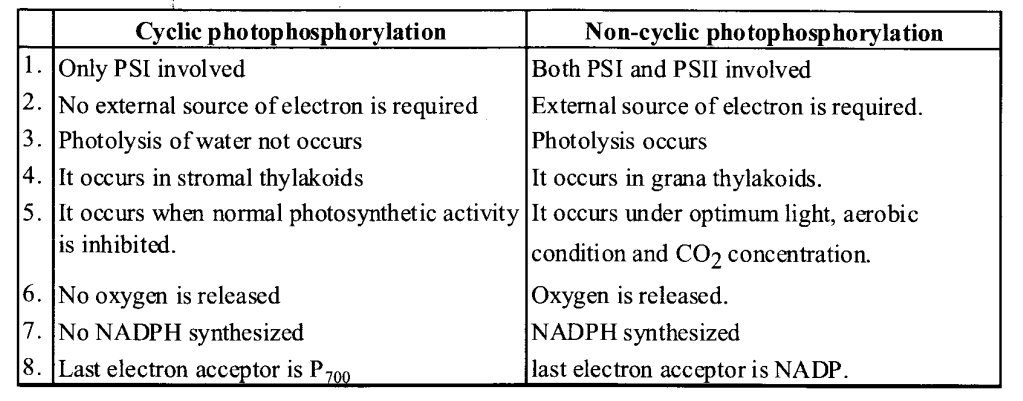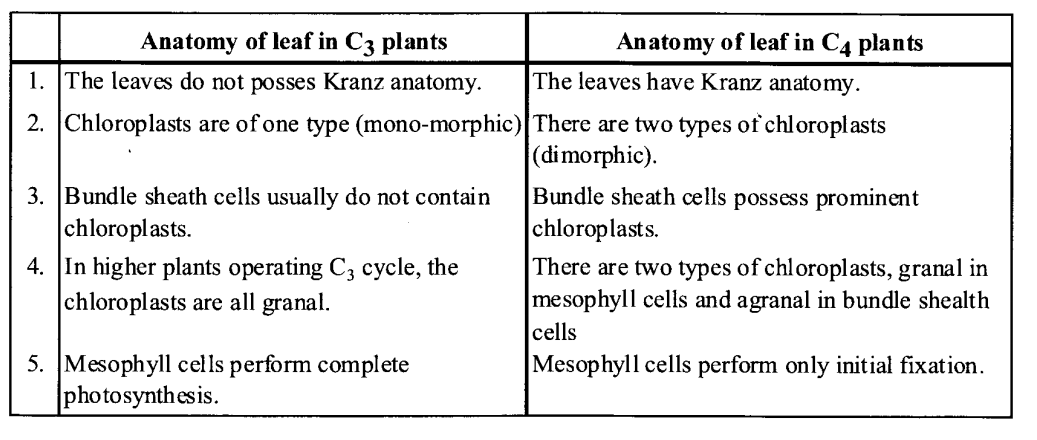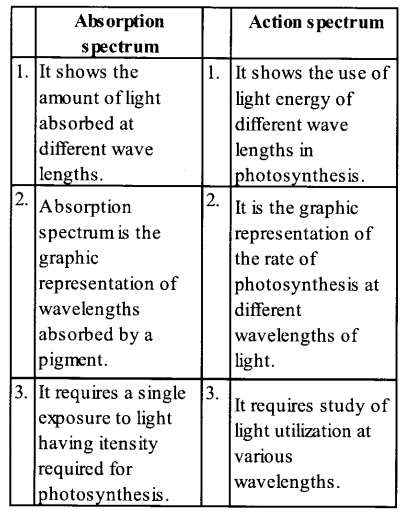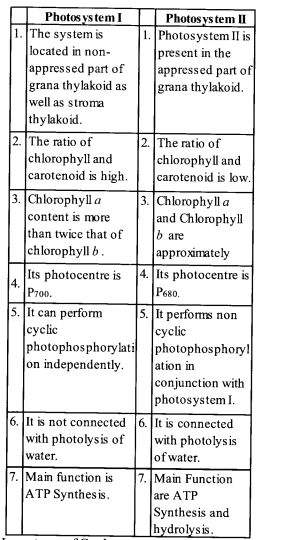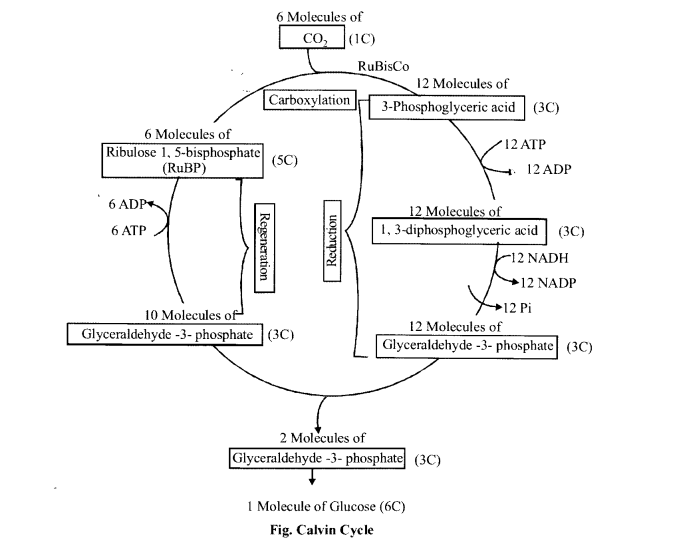
Note-making is an advanced writing skill which is gaining importance due to knowledge explosion. There is a need to remember at least the main points of any given subject. Making notes is a complex activity which combines several skills.
This grammar section explains English Grammar in a clear and simple way. There are example sentences to show how the language is used.
Students can also read NCERT Solutions for Class 11 English to get good marks in CBSE Board Exams.
Note Making Class 11 CBSE Format, Examples
I. How to make notes:
1. Read the passage carefully.
2. Give a heading to your work. The heading will be based on the following considerations.
(i) What is the main idea of the passage?
(ii) Frame a heading based on the main idea.
(iii) Write it in the middle of the page.
3. Give subheadings
(i) How has the main idea been presented and developed?
(ii) Are there two or three subordinate/associated ideas?
(iii) Frame subheadings based on these.
4. Points are to be noted under each subheading.
Are there further details or points of the subtitles that you wish to keep in these notes? These are called points. Points may have subpoints.
5. All subheadings should be at a uniform distance from the margin.
6. Indenting – Points should also be at the same distance away from the margin.
7. Do not write complete sentences.
8. Abbreviations should be used.
II. Help with abbreviations:
1. Use standard abbreviations and symbols as far as possible.
(i) Capitalise the first letters of the names of states, countries or organisations.
For example: UP, USA, UK and UNO.
(ii) Common abbreviations
Sc. (for science), Mr, Mrs, Dr, govt, BSc, etc.
(iii) Common symbols such as i.e., e.g., Rx, /, ∴ , +ve, -ve, → (leading to) ↑ (rising), ↓ (falling), =, >, <
(iv) Measurements and figures – 100″, 100′, 100 kg, 100 mm, 100 mL.
2. Make your own abbreviations.
(i) Keep the main sounds of the words: edn (education), progm. (programme).
(ii) It is a good practice to keep the first few and the last letters of the word such as education – edu’n, developing – dev’ing. Retain the suffix so that later when you are going over the notes, you may recall the full form of the word, for example: ed’nal (educational), prog’ve (progressive).
3. Take the following caution:
(i) Do not get overenthusiastic about abbreviations.
(ii) You should not abbreviate every word.
(iii) One abbreviation in one point is enough.
(iv) As a general rule, the heading should not be abbreviated.
(v) You may use abbreviations in subheadings.
III. Your notes should look like this:
(i) Indenting is essential.
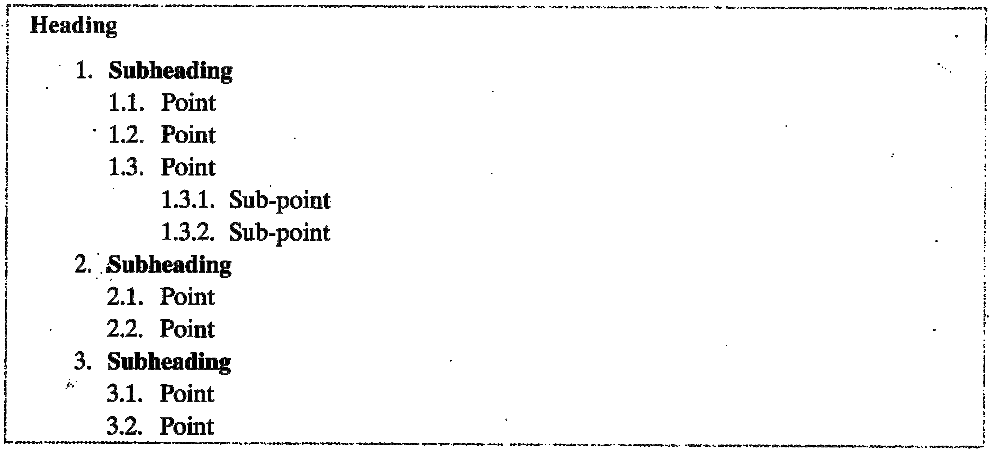
Notice that indenting, i.e. shifting from the margin, has been used to clearly indicate subheadings, points and subpoints. Subheadings, though separated by points, occur below one another. Similarly, points and subpoints should also come below one another. Such use of indenting gives your notes a visual character. At a glance, you can see the main idea and its various aspects.
(ii) Numbering-You may follow any system but you should be consistent, that is, you should follow the same system throughout. Some examples are given below.
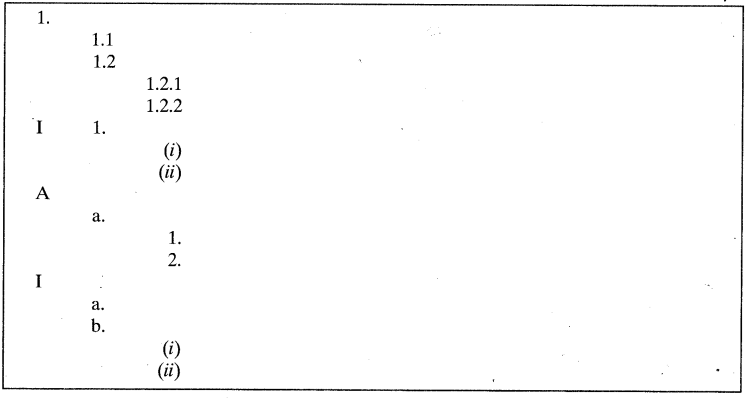
IV. Abbreviations:
Note-making is an informal exercise as it is meant for your use only. You will not present a formal document in note form. Notes will be developed into a more formal piece of writing. Since notes are informal and are meant for your use only, you can abbreviate long words or use accepted abbreviations and symbols.
Writing a summary: The summary is an abstract of the passage. Expand your heading and subheadings and write down the ideas developed in the passage in the specified word limit.
1. Read the passage given below and answer the questions that follow: [NCT 2018]
1. Flexibility and mobility are essential not only to reduce the risk of injuries but to generally feel better. Living a nine to five desk life can be demanding on health and wellness. Here is how you can keep the most common problems at bay.
2. Even if you are not exercising you need to make sure that you maintain correct posture and sit at your desk in the right way. It is important that your chair is placed correctly and your legs are not left hanging. Proper alignment ensures that your neck and back are not strained. Exercises and abdominal crunches two to three times a week can strengthen the core. It will help take the pressure off your back and will make it easier to maintain good posture. Chairs with a back that support your upper back are preferable for those who work long hours in front of screens.
3. Constant typing, writing reports, and answering e-mails can exert your wrists leading to long-term damage. The frequency of your use and how you position your wrists at your keyboard can be a reason. The telltale signs of exertion would be a tingling sensation or numbness. One should not ignore initial signs. Make sure that you rest your wrist at regular intervals. To relieve tension quickly fold your hands in a NAMASTE in front of your chest with elbows moving out and lower your hands till you feel a good stretch in your wrists. Also rotating your fists inside and outside provides much relief to strained wrists.
4. Since those who work on desks spend a lot of time looking at a computer screen, they are at a risk of straining their eyes. This may also lead to dry eyes and fatigue. Poor eyesight is the result of continued and improper exposure to screens. Keeping the computer screen at an optimal distance helps a lot in minimising strain to eyes. The screen shouldn’t be too close or too far. To ease eye strain use good lighting and make it a point to look at a distance away from your screen every twenty to thirty minutes.
(a) On the basis of your reading of the above passage make notes on it using headings and subheadings.
Use recognisable abbreviations and a format you consider suitable. Also, supply a title to it.
(b) Write a summary of the passage in not more than 80 words using the notes made.
Answer:
(a) Health and Wellness for Desk users
1. Correct posture
1.1 Place chair correctly for neck and back
1.2 Don’t hang legs
1.3 Excises & abdominal crunches
1.4 Choose chairs with support from upper back
2. Maintaining wrist flexibility
2.1 Wrong position can cause wrist damage, cause tingling
2.2. Relax wrists reg’ly in Namaste position and stretch
2.3 Rotate wrists inside and outside.
3. Preventing eye strain
3.1 Eye strain can cause dry eyes and fatigue
3.2 Keep computer screen at an optimal distance to prevent poor eyesight
3.3 Use good light’g
3.4 Look at a distant spot every 20-30 minutes.
Key to the Abbreviations Used
1. corr’ly – correctly
2. ex’cises – exercises
3. abdom’l – abdominal
4. damg – damage
5. reg’ly – regularly
6. light’g – lighting
(b) Summary
Desk users are at risk of losing flexibility, mobility, and wellness due to long working hours. Good selection of office chairs and proper posture are essential for neck and back health. Damage to the wrists can be prevented by exercising them frequently. Eyes too are at a risk due to looking at the computer screen for long. Optimal distance from the screen will prevent fatigue, dry eyes and poor vision. Good lighting is essential. One should look away from the screen every 20-30 minutes.
2. Read the passage given below and answer the questions that follow: [NCT 2017]
1. Jahangir was born on 30 August 1569, to Akbar, the Mughal Emperor, and his Hindu wife, Jodha Bai. He was crowned on 24 October 1605. In the twenty-two years, he was Emperor, till his death on 28 October 1627, he had many battles to fight and many rebellions to suppress. But he always found time for his greatest hobby-the study of animals and plants. He was an avid bird watcher or an ornithologist as he would be called now, and a keen naturalist. The care and accuracy with which Jahangir described various characteristics of animals and birds, their geographical distribution and behaviour, would have done credit to a full-time naturalist. His observations are recorded in his memoirs, the Tuzuk-i-Jahangiri.
2. Jahangir had a small zoo and he would spend hours-sometimes days and nights together-on his observations. For the first time in the history- of ornithology, he noted how sarus cranes mate brood over their eggs in turn, and how chicks are hatched and taken care of. He also observed one human quality in this bird: the parents love not only their eggs and chicks but also each other.
3. The Emperor had several famous painters in his court. When he came across a rare animal, bird or plant, he would instruct an artist to draw it. The painter who excelled in this art was Ustad Mansur. For modern ornithologists, Jahangir’s collection of paintings provides a strikingly accurate description of the natural history of the day. Unfortunately, most of these paintings are no longer to be found in India. With the disintegration of the Mughal Empire, foreign adventures looted this treasure. Most of the paintings were thus lost.
4. In 1958, a Russian researcher, A Ivanoc, created a sensation when he discovered, a rare portrait of the dodo, a large non-flying pigeon-like bird, which became extinct about three centuries ago. This portrait was found in a collection of paintings at the Institute of Orientalists of Soviet Academy of Sciences. There was no way of identifying the painter, but the style, without doubt was that of Ustad Mansur. Now there is evidence to show that it was the portrait of Mauritian dodo that was presented to Emperor Jahangir around 1624. Over three centuries after their death, Jahangir and his dodo made a dramatic reappearance in the world of ornithology!
5. Jahangir also loved gardens, but his dissertations in botany and horticulture were mostly confined to how a lotus traps hornets or how saffron sprouts from soil. However, he was responsible for the cultivation of high altitude trees such as the cypress, juniper, pine and Javanse sandal in plains.
6. Jahangir had many other scientific interests. He once conducted an experiment to show that the air of Mahmudabad (in Gujrat) was healthier than that of Ahmedabad. He was fascinated by the movement of the stars and the planets and used to regularly record the occurrence of solar and lunar eclipses. When a comet made its appearance, he recorded the growth and decay of its tail.
(a) On the basis of your reading of the above passage, make notes on it in points. Also, suggest a suitable title.
(b) Write a summary of the passage in not more than 80 words using the notes made.
Answer:
(a) Emperor Jahangir: The Naturalist
1. An ornithologist & animal enthusiast
(i) described ch’stics distribution & behaviour of animals & birds
(ii) had a private zoo – observed sarus cranes’ behaviour as families
2. Documentation of observations
(i) rare animals, birds, plants were painted by skilled artists-Ustad Mansur, outstanding artist
(ii) recorded observations in autobiography ‘Tuzuk-i-Jahangir i’
(iii) Mughal paintings looted by foreign adven’rs.
(iv) Portrait of Mauritian Dodo (presented to Emperor Jahangir in 1624) found by Russian researcher A. Ivanoc in 1958
3. Other sci’fic interests
(i) wrote dissertations on botany, horticulture
(ii) cultiv’n of high altitude trees in plains
(iii) expts on air
(iv) movem’t of stars & planets, eclipses & comets
Key to abbreviations:
ch’stics – characteristics
adven’rs – adventurers
sc’fic – scientific
cultiv’n – cultivation
expts – experiments
move’mt – movement
(b) Summary
Emperor Jahangir was a keen naturalist. He loved to observe birds and animals and had the rare ones painted by skilled artists like Ustad Mansur. A portrait of an extinct Maurition Dodo was discovered by A. Ivanoc, a Russian researcher.
Jahangir had a small zoo, where he observed birds and animals, particularly sarus crane. He noted his observations on the behaviour and geographical distribution in his autobiography Tuzuk-i-Jahangiri.
Besides, he had an interest in horticulture, stars and planets, eclipses, and even in the purity of air in various cities.
3. Read the passage given below and answer the questions that follow: [NCT 2016]
Effective speaking depends on effective listening. It takes energy to concentrate on hearing and to concentrate on understanding what has been heard. Incompetent listeners fail in a number of ways. First, they may drift. Their attention drifts from what the speaker is saying. Second, they may counter. They find counter-arguments to whatever a speaker may be saying. Third, they compete. Then, they filter. They exclude from their understanding those parts of the message which do not readily fit with their own frame of reference. Finally, they react. They let personal feelings about the speaker or subject overside the significance of the message which is being sent.
What can a listener do to be more effective. The first key to effective listening is the art of concentration. If a listener positively wishes to concentrate on receiving a message, his chances of success are high!
It may need determination. Some speakers are difficult to follow either because of voice problems or because of the form in which they send a message. There is then a particular need for the determination of a listener to concentrate on what is being said.
Concentration is helped by alertness. Mental alertness is helped by physical alertness. It is not simply physical fitness but also positioning of the body, the limbs, and the head. Some people also find it helpful to their concentration if they hold the head slightly to one side. One useful way for achieving this is intensive notetaking, by trying to capture the critical headings and subheadings the speaker is referring to.
Note-taking has been recommended as an aid to the listener. It also helps the speaker. It gives him confidence when he sees that listeners are sufficiently interested to take notes, the patterns of eye contact when the note taker looks up can be very positive; and the speaker’s timing is aided he can see when a note-taker is writing hard and can then make effective use of pauses.
Posture too is important. Consider the impact made by a less competent listener who pushes his chair backward and slouches. An upright posture helps a listener’s concentration. At the same time, it is seen by the speaker to be a positive feature amongst his listeners. Effective listening skills . have an impact on both the listener and the speaker.
(a) On the basis of your reading of the above passage make notes on it using headings and subheadings. Use recognizable abbreviations wherever necessary and also suggest a suitable title.
(b) Write a summary of the passage in not more than 80 words using the notes.
Answer:
(a) Effective Listening Leads to Effective Speaking
1. Incompetent listening
(a) attention drifts
(b) lis’nr counters arguments and competes
(i) filters msgs
(ii) reacts to the msg
2. How to listen effectively
(a) concentration is needed
(i) alertness helps in concentration
(ii) physical fitness → mental alertness
(b) Note-tkg aids effective listening
(i) lis’nr tries to capture the main pts
(ii) note-tkg helps the spkr too
(c) Determination is needed to
(i) overcome voice and other pecul iarities
(ii) decipher the form of the msg
(d) Posture helps
(i) upright posture of lis’nr helps in concentration
(ii) helps the spkr
3. Conclusion
Effective listening impacts the lis’nr and the spkr
Key to abbreviations:
lis’nr – listener
msg – message
tkg – taking
pts – points
spkr – speaker
(b) Summary:
Good listening can aid the speaker and can lead to good speaking. Incompetent listeners disturb good speaking by countering the speaker or by competing with him.
For good listening concentration on receiving the message is needed. Determination to receive the message, mental alertness, and good posture help. Taking notes is also an aid to concentration and good listening.
Good listening helps the speaker through eye contact. An attentive posture of the listener increases the speaker’s confidence.
4. Read the passage carefully and answer the questions that follow: [NCT 2015]
1. Twenty-one-year-old Jyoti Amge, the smallest woman in the world, laughs easily and often. Perhaps, from a height of twenty-three inches, the world does look a bit funny.
Afflicted with achondroplasia, a form of pituitary dwarfism, 21-year-old Amge is a bit shorter than her two-year-old nephew and a lad taller than her framed Guinness certificate. In fact, Amge, the youngest of five, wasn’t even visible in her mother’s womb. The doctors thought she wasn’t alive and her mother Ranjana, who underwent a two-hour caesarian operation in her tenth month to birth her, welcomed her youngest as a blessing. In all of Amge’s birthday pictures in the album, her height is the same from age three to twenty-one. Kitted out in custom made frocks and bright red lipstick; with fancy beads lining her permed hair, the tiny Amge turned heads in Nagpur and became a hit with Hindi news channel crews that approached her for bytes, any excuse would do, even the elections. Apart from a cameo in a Mika Singh video, she appeared briefly on the reality show Big Boss 6.
“I have always wanted to be an actor,” says Amge. Amge was quick to say yes when the producers of ‘American Horror Story’ Freak Show contacted her. “They had seen my interview in a New York daily,” says Amge, who readily agreed to play the role of Ma Petite, the miniature sari- and-bindi-clad assistant of a woman.
“In spite of the name the show was not about freaks it was about compassion,” says Amge. “What makes the world so interesting in that we are different and some folks a little bit odd,” she said. Sadly, Amge’s own home country does not seem to respect differences. Amge’s brother complained that unlike the West where “people ask permission before clicking a photo,” Indians take her privacy for granted. People look at her like she’s a wonder, an ajooba and try to get too close to her. I have to shelter her like a body guard, adds Satish.
Amge’s family members now make up her entourage. They help Amge, who suffered an accident in Kashmir that severely fractured her left leg, with everything from braiding her hair to carrying her to the washbasin. Be it the nearby mall or a trip to China, one or more of them always accompany her.
(a) On the basis of your reading make notes on the above passage. Using abbreviations where necessary. Give a suitable title to your notes.
(b) Write the summary of the passage in your words. Don’t forget to write the title.
Answer:
(a) 1. Jyoti Amge: The smallest woman in the world.
(i) only 23″ tall at 21 years of age
(ii) dwarf due to achondroplasia
(iii) was not visible in her mother’s womb
(iv) same ht from 3 to 21 years.
2. Media exposure
(i) Jyoti a hit on a Hindi news chnl in Nagpur
(ii) cameo in a Mika Singh video and Big Boss 6
(iii) ‘American Horror Story’ a Freak Show of the US
3. No respect for privacy in Ind
(i) Ppl stare at her
(ii) Fml has to shelter her or accompany her.
Key to abbreviations:
ht – height
chnl – channel
Ind – India
ppl – people
fml – family
(b) Jyoti Amge: The Smallest Woman in the World
Jyoti Amge is twenty-one years old and only 23” tall. She is the world’s smallest woman. She did not gain height after three years of age due to achondroplasia. Jyoti caught the attention of a Hindi news channel in Nagpur. She featured briefly on a Mika Singh’s video and the reality show Big Boss 6. She played a role in the American Freak Show named American Horror
Story.
In India, however, Jyoti’s privacy is not respected. Her family remains close to her in order
to protect her.
5. Read the passage given below and answer the questions that follow: [NCT 2014]
1. Everyone needs a holiday, both to relax and to have a change of environment. The holidaymakers feel relaxed and refreshed at the end of the holiday and look forward to the resumption of their duties, be it at school, office, or factories, with renewed vigour. This is the reason why all establishments grant their employees annual leave. With the end of the academic year, the schools and universities grant their pupils a long holiday during mid-summer. This lasts until early September when the new school term starts. Of course, the parents will like to take advantage of this and take their leave to coincide with the children’s vacations. This has become a traditional holiday season in most European countries, particularly in England.
With the coming of August, the traditional holiday season in Britain reaches its peak point and most of the holiday resorts are packed to capacity. In order to avoid the crowd, some prefer to take their holiday a little earlier if facilities so warrant. Those who have already taken their holidays can console themselves not only with reflections on the happy days spent in the country, at the seaside or abroad but also with the thought that holiday expenses are over for the year and that by taking an earlier holiday they have missed the August rush.
The main thing, of course, is the weather and that would be hazardous to prophesy. But whatever the weather is like, the essence of a holiday for most is the carefree atmosphere in which it can be enjoyed. “Take all you need but leave your worries behind” is the sound advice for the holidaymaker. Private worries are not always easy to escape from. However, even the pessimist would admit that for the moment things appear brighter than they have been.
Holiday time is surely a time for shedding serious pre-occupations and seeking the pleasures that appeal to us. It is true that we may not always succeed in finding them, indeed there are people who maintain that the great thing about the holiday is that it gives you an ampler appreciation of home comforts – a view no doubt more widely held among the elderly than you.
(a) On the basis of your reading the above passage, make notes using headings and subheadings. Use recognizable abbreviations, wherever necessary. And also suggest a suitable title for it.
(b) Write a summary of the above passage in not more than 80 words using the notes made by you.
Answer:
(a) Importance of Holidays
1. Need for holidays
(i) holidays give relaxation to students and workers
(ii) establishments grant annual holidays
(iii) schools and univs give holidays mid-summer
(iv) Aug-Sept are holidays season in Europe, England
2. Aug-Sept peak holiday season
(i) resorts packed to capacity
(ii) some take early holidays in Aug.
3. Carefree atmosphere-the essence of holidays
(i) weather may be bad
(ii) private wor’s are difficult to forget
(iii) we shed wor’s during holidays
(iv) Holidays give us keener appr’cn of home comfort
Key to abbreviations:
Univs – universities
Aug – August
Sept – September
Wor’s – worries
Appr’cn – appreciation
(b) Holidays are important in our lives because they provide us with relaxation. All establishments and academic institutions grant holidays in summer. August and September are holiday seasons in Europe and England.
In August most holiday resorts in Britain are packed to capacity. Some people take their holidays a little early in order to avoid the crowds.
The most important thing is to have a carefree atmosphere even though private worries are difficult to get rid of. During holidays we acquire ampler appreciation of home comfort.
6. Read the passage given below and answer the questions that follow:
1. When planning to go on a vacation, the tendency is to make sure that the travel plans are hassle free, before stepping out of one’s doors. This involves booking by train, bus or even by air to one’s chosen destination. Yet the greatest holidays can be enjoyed by going on foot and I am not referring to trekking expeditions into the wilds. Any holiday can be made into a walking trip by opting out of a bus ride or a train journey or a taxi drop, by selecting to go on foot. Besides, walking is a great form of exercise and, above all, helps you to go deep into the local culture, the daily lives of people, their food and their music.
2. Walking helps you enhance the adventurous streak in you. If you are out on a beach holiday, instead of workouts at the gym, head out to the water for your exercise. Resort pools are a great way to have fun and stay fit and are suitable for all ages. Wake up early to start your day with a swim and you can also recruit family and friends to join in to make the activity even more interesting.
3. The best holiday destinations need not be those that the travel brochures advertise. It can be one of your own search, if you take advantage of what an area is known for and then set out to explore it on your own terms. Thus you can learn tai chi when on a trip to China or smarten up your dancing skills by trying out flamenco when in Spain.
4. In order to enjoy a walking holiday to the hilt, one needs to be physically in form. Thus one needs to keep a tab on one’s diet when on holiday. The travel brochures give you a choice of tried-out brands with a peppering of local options. But whatever be your choice, it is smart to stick to the rule book. In every place you are sure to find fresh and healthy high-protein, high- fibre options to fill you up. That will keep you away from opting for the high sugar, processed foods, and simple carbohydrates.
5. These simple rules would ensure that your walking holiday was not only enjoyable but one that left you feeling fully in command of your holiday mood and proved economical as you did not waste a single moment nursing an upset belly or a sluggish day or a boring ride across acres of , non-stimulating countryside, cooped in a taxi or jostling on a train.
(a) On the basis of your reading of the above passage, make notes on it, using headings and
subheadings. Use recognisable abbreviations (wherever necessary-minimum four) and a format you consider suitable. Also supply an appropriate title to it.
(b) Write a summary of the passage in about 80 words.
Answer:
(A) ‘Walking Holidays’
Notes:
1. Planning a vacation involves
1. making it hassle-free
2. bookings in advance
3. options of air, train, bus, taxi
2. Choice of a walking holiday
1. great form of exercise
2. allows going deep into local culture
3. selections of cuisine and music
4. explore area beyond travel brochure info.
3. Comb walking holiday with holiday choices
1. Beach holiday: workouts on beach
2. Resort holiday: early morning swim
4. Food intake on a walking holiday
1. necessity of keeping fit by choosing what to eat
2. high fibre, high prot options preferred
3. curbs opting for high sugar, simple carbs and processed food
5. Advs of food selections
1. feel fully in comd of your holiday
2. no time wasted over upset belly, or sluggish day
3. keeps off boring taxi rides across the non-stimulating countryside
Abbreviations used
info – information
carbs – carbohydrates
comd – command
combo – combining
prot – proteins
Advs – Advantages
(b) Summary
Conventional holiday planning involves making bookings by air, train or taxi. Yet the choice of a walking holiday allows opportunities of delving into local culture, exploring areas not included in travel brochures. Workouts on a beach for beach holidaymakers and use of a resort pool at resort destinations are the usual modes of exercise on a holiday. Walkers, though, need to keep an eye on dietary intakes, settling for high fibre, high protein options to ward off high sugar, simple carbohydrates, and processed foods. This regimen keeps walkers fully in command, minus upset Stomachs and boring taxi rides.
7. Read the passage given below and answer the questions that follow:
1. We are all now aware that some new scientific or technological advance, although useful, may have unpleasant side effects. More and more the tendency is to exert caution before committing the world to something that may not be reversible.
2. The trouble is, it’s not always easy to tell what the side effects will be. In 1846, Ascanio Sobrero produced the first nitroglycerine. Heated, a drop of it exploded shatteringly. The Italian chemist realised in horror its possible application to warfare and stopped his research at once. It didn’t help, of course. Others followed it up and other high explosives were indeed being used in warfare by the close of the nineteenth century.
3. Did that make high explosives entirely bad? In 1867, Alfred Nobel learned how to mix nitroglycerine with diatomaceous earth to produce a safer-to-handle mixture he called ‘dynamite’. With dynamite, earth could be moved at a rate far beyond that of pick and shovel and without brutalising men by hard labour. It was dynamite that helped forge the way for railways, that helped build dams, subways, foundations, bridges, and a thousand other grand-scale constructions of the industrial age.
4. A double-edged sword of good and evil has hung over human technology from the beginning. The invention of knives and spears increased man’s food supply-and improved the art of murder. The discovery of nuclear energy now places all the earth under the threat of destruction-yet it also offers the possibility of fusion power as an ultimate solution to men’s energy problems.
5. Or think back to the first successful vaccination in 1876 and the germ theory of disease in the 1860s. Do we view medical advance as dangerous to humanity, or refuse to take advantage of vaccines and antitoxins, of anesthesia and asepsis, of chemical specifics and antibiotics? And yet the side effects of the last century’s medical discoveries have done more to assure civilisation’s destruction than anything nuclear physicists have done. For, the population explosion today is caused not by any rise in average birth rate but by the sharp drop-thanks to medicine-in the death rate.
6. Does that mean science should have avoided improving man’s lot through medicine and kept mankind a short-lived race? Or does it mean we should use science to correct the possibly harmful side effects, devise methods that would make it simpler to reduce the birth rate and keep it matching the falling death rate? The latter, obviously.
7. About 8000 B.C., mankind invented agriculture. Again it made possible an increase in numbers. People had never eaten so well, but it meant they had to give up the free, nomadic life and remain bound to the soil. It meant hard labour. It meant banding together to fight off surrounding tribes who, still food gathering, might help themselves to your crops. It also meant the risk of crop failures.
8. Where irrigation was introduced to make harvest more dependable, it meant the formation of a large political unit, the social tyranny of a king, an aristocracy, a priesthood. And, even if the land grew prosperous and populous, any infectious disease that got started ran through the crowded population like wildfire. ’
9. Why not, then, go back to the wilder, freer ways of hunting and food gathering? Wouldn’t that mean less work and worry, less war, less pestilence?
10. But you can’t! Abandon agriculture and, out of every 10,000 people, only 100 survive. No, the problems to which agriculture gave rise could be solved only by moving forward with additional advances in technology-the use of oxen in place of men, horses in place of oxen, crop rotation, fertilisers, etc.
11. We’can save, conserve, cut out waste, but what we have, we must keep. The only solution, as always in the history of mankind, is to solve problems by still further advances in technology.
(a) Make notes on the passage in any suitable format using recognisable abbreviations, wherever necessary. Give a suitable title to your notes.
(b) Write a summary of the passage in about 80 words based on your notes.
Answer:
(A) Scientific Advancement-A Double-Edged Sword
1. Benefits of technology
1.1 Nitroglycerine explodes shatteringly
1.1.1 modified to dynamite used for earth mov’g
1.1.2 railws, dams, bridges became possible
1.1.3 substitute for manual labour-freed men from slavery
1.2. knives & spears increased man’s food supply
1.3. nuclear energy-sol’n to man’s energy probs
1.4. vaccination-freedom from disease
1.5. agriculture-inc. in numbers
2. Harmful effects
2.1. used in warfare
2.2. extremely destr’ve
2.3. improved art of murder
2.4. destruc’n of earth possible
2.5. popl’n increase
2.6. (a) possible crop failures
(b) banding together-wars to protect crops
(c) tyranny of kings, priesthood
3. Conclusion
3.1. Scientific advancement can’t be given up
3.2. Solve problems by still further advancement in technology.
Key to abbreviations:
mov’g – moving
railws – railways
sol’n – solution
inc – increase
destr’ve – destructive
(b) Summary
Scientific advancements, however beneficial, have some harmful side effects. We need to be cautious before introducing an advancement, the side effects of which may be irreversible. High explosives have immense destructive power but can be used for earthmoving and construction. Best of all, they free men of manual labour. Similarly, knives and spears and even nuclear energy have good as well as bad uses. Vaccinations controlled disease, but also caused the population explosion, similarly, agriculture and irrigation brought settled societies but also the tyranny of kings.
Whatever happens, we cannot give up scientific advancement. Rather, if science creates problems, we have to solve them with more scientific advancement.
8. Read the passage given below and answer the questions that follow:
1. It must have been a terrible experience. The earthquake began with strong side-to-side movements which knocked down any person who was standing. Then there were up-and-down movements, a vast rumbling and reverberating noise as of an artillery bombardment or a hundred aeroplanes in the sky, and whter gushed out in innumerable places out of huge fissures and craters and rose to about ten or twelve feet. All this probably lasted for three minutes or a little more, and then it died down; but those three minutes were terrible enough. It is not surprising that many persons who saw this happen imagined that this was the end of the world. In the cities, there was a noise of falling houses, and rushing of waters, and an atmosphere full of dust which made it impossible to see even a few yards. In the rural areas, there was not much dust and one could see a little farther, but there were no calm-eyed spectators. Those who survived lay flat on the ground or rolled about in an agony of terror.
2. The city of Monghyr was the last place in our tour. When we saw Monghyr and the absolute destruction of this rich city, we gasped and shivered at the horror of it.
3. All over the earthquake areas there was a very painful absence of self-help among the residents, both in the cities and villages. Probably, the middle classes in the cities were the worst offenders in this respect. They all waited for somebody to take action and help them, either the Government or the non-official relief agencies. Others who offered their services thought that the work meant ordering people about. Part of this feeling of helplessness was no doubt due to the nervous collapse brought about by the terror of the earthquake, and it must have gradually lessened.
4. In marked contrast with this was the energy and capacity of the large numbers of relief workers – who poured in from other parts of Bihar and other provinces. It was wonderful to see the spirit of efficient service of these young men and women and, in spite of the fact that a host of separate relief organisations were working, there was a great deal of co-operation between them.
5. Of all the non-official relief organisations, the Central Relief Committee, of which Rajendra Prasad was the head, was by far the most important. This was by no means a purely Congress organisation, and it developed into an all-India body representing various groups and the donors. It had, however, the great advantage of having the Congress organisation in the rural areas at its disposal.
6. The Relief Committee availed itself of this fine organisation to reach the peasantry. In the rural areas, no other agency, not even the Government, could be so helpful. And the head of both the Relief Committee and the Bihar Congress Organisation was Rajendra Babu, the unquestioned leader of Bihar. Looking like a peasant, a typical son of the soil of Bihar, he is not impressive at first sight, till one notices his keen frank eyes and his earnest look. One does not forget that look or those eyes, for through them truth looks at you and there is no doubting them. His outstanding ability, his perfect straightness, his energy, and his devotion to the cause of Indian freedom are qualities which have made him loved not only in his own province but throughout India. (Jawahar Lai Nehru)
(a) Make notes on the passage in any suitable format using recognisable abbreviations. Give a title to your notes.
(b) Write a summary of the passage in about 80 words based on your notes.
Answer:
(a) Earthquake in Bihar
1. The quake:
1.1 movem’ts – movem’ts knocked down people
1.2 reverberating noise
1.3 fissures and craters, water gushed out, dust in atmosphere
1.4 terbl. destruction in Monghyr
2. The victims:
2.1 painful absc. of self-help
2.2 waited for govt non-govt agencies to act
2.3 some only ordered others
2.4 quake generated helplessness, nervous collapse
3. Relief work:
3.1 wkrs from Bihar & other states energetic
3.2 cooperation between different teams
3.3 Central Relief Com’tee headed by Dr Rajendra Prasad
3.3.1 Congress organsn of rural areas at its disposal
3.3.2 most effective in rural areas
4. Rajendra Prasad-unquestioned leader of Bihar:
4.1 head of Bihar Congress & Relief Com’tee
4.2 peasant like looks not impressive
4.3 earnest, truthful
4.4 man of outstanding ability, integrity, devoted to the cause of freedom
Key to abbreviations:
movem’ts – movements
terbl. – terrible
absc. – absence
wkrs – workers
organsn – organisation
com’tee – committee
(b) Summary
When earthquake struck Bihar the earth moved sideways as well as up and down. People were knocked down. There was reverberating noise as well as fissures and craters. The destruction of Monghyr city was horrifying.
In all this destruction there was a painful absence of self-help. People only waited for government or non-government agencies to help or ordered other people.
In contrast, the young relief workers from Bihar and other places were full of energy and spirit of service. There was cooperation among various teams.
Of all the teams, Dr. Rajendra Prasad’s team was the most important. It had the support of the Congress Party in rural areas too. Rajendra Babu was the unquestioned leader of Bihar.
9. Read the passage given below and answer the questions that follow:
1. Leadership is very unique chemistry which happens when the best of everything gets together to create magic.
2. The New Testament says: “As Jesus passed on from there, he saw a man named Mathew sitting at the tax office and said to him, ‘Follow me.’ So he rose and followed him.” No questions, no arguments, no hesitation. What is that mysterious, intangible, electric elusive quality known as leadership?
3. The inevitable million-dollar question that keeps cropping up is “Are leaders born with a natural capability to lead or do they learn to do so?” And the surprising answer is-both. Organisational capabilities and individual brilliance are something they are born with. But fine points such as patience, humility, and appreciating opinion different from one’s own, are all acquired in time. As G.B. Shaw once remarked, “The golden rule is that there are no golden rules.” One can never pinpoint with absolute accuracy all the traits that a leader requires. They change from time to time and situation to situation.
4. The true qualities of a person emerge in the face of adversity. So is it with leaders? Look at any person who has the rare ability to lead, the first thing you find is how cool and self-composed he is even in times of crisis. In the midst of chaos, he sets out in right earnest setting things right, restoring normalcy, and soon things are back to normal.
5. A leader has to be a visionary; he must be able to draw inspiration from the past and envision a future brighter than the present, however difficult that might seem. He has to be very clear about the vision-what he is serving and the mission-what he must achieve.
6. Another distinguishing trait of leaders is their organisational ability, the ability to coordinate together individual efforts into a single one.
7. A leader has the capability of bringing out the best in the people he leads and cultivate a team spirit. He allows others to solve the problem rather than taking it on single-handedly. He has to communicate very well so as to gain the confidence of others so that they feel they are on the right track and then they would be ready to lay down their lives.
8. He has to be patient, to listen to others’ grievances, and hence half the battle is won.
9. A leader has to be a highly efficient manager as well as a coordinator. He might have to set an example before the rest. His individual work has to be flawless.
10. “A leader is a dealer in hope,” said Napoleon.
11. The success of leaders is finally measured not only in terms of how capable they appear, or how well they are able to perform as individuals but how successful they are in leading their team to perform.
12. A leader has the capacity and will to rally men and women to a common purpose.
(a) On the basis of your reading of the above passage, make notes on it, using headings and subheadings. Use recognisable abbreviations and give an appropriate title.
(b) Write a summary of the passage in about 80 words based on your notes.
Answer:
(a) Leaders And Leadership
1. Ldrs are born as well as dev.:
1.1 born ldrs have organiz’l capabilities & brilliance
1.2 acquired qualities-patience, humility, open mind
2. Qualities of a ldr
2.1 cool in adversity – restores normalcy in chaos
2.2 has a vision
2.3 organiser – can coordinate, effective manager
2.4 can bring out the best in people, patient
3. Conclusion-A good ldr successfully leads his team to perform to achieve a com’n purpose
Key to abbreviations
ldrs – leaders
dev. – developed
organiz’l – organizational
com’n – common
(b) Summary
Are leaders born to be leaders or do they develop into one? Surprisingly both. They have some inborn capabilities as brilliance, organizational abilities but they also develop some qualities like patience, humility, etc. These qualities of a person emerge in advertisity. A leader is cool even in the time of a crisis; he restores normalcy in chaos.
The leader has a vision. Inspired by the past, he has a vision for a bright future. A leader has great organizational ability. He can bring out the best in the people, cultivate team spirit, communicate well with people and gain their confidence. He is patient and listens to people. His own work is flawless. A good leader successfully leads his team to achieve a common purpose.
10. Read the passage given below and answer the questions that follow:
1. The nine-letter word “interview” can cause the most knowledgeable and strong people in the world to perspire. That may be one reason, political leaders and corporate giants normally do not agree for an interview. But the popular ones, or those who want to make an impact, willingly give interviews. In modern times, whether you like interview or not, your prospects depend on its success. So you must know what an interviewer expects from you.
2. First an academic question. What is an interview? It is a discussion in which an interviewer faces a candidate for a short while and asks questions to probe his knowledge and awareness on the subject. This is done to assess the personality of the interviewee. It is a very formal means of interaction with one person facing a group of persons, each of whom is a specialist in his or her field.
3. Knowledge is an important component of success in an interview. It has two aspects: range and depth. The former implies that you should know a lot beyond your own specialisation and the latter means an awareness of the various aspects of the topics under discussion. In-depth knowledge is gained through reading and listening. Listening is more important than reading. Be a keen listener, store major facts in your mind, and use them at the appropriate time.
4. Next comes appearance, which means your dress for the interview. You must be elegantly attired for the occasion. Wear a simple outfit that suits your physique and features. Women should wear sarees or any other sober dress. Casuals like kurta-pajama should not feature in your selection of dresses.
5. Conducting yourself in an apt way is equally significant. The way you move, sit on the chair, place your hands, and your briefcase, and talk to the members reflect your behaviour. Walking sloppily, talking loudly or inaudibly, getting irritated easily, and showing documents insistently are symptoms of bad behaviour. A better way is to enter the room smartly, move forward with dignity, greet the board, sit when asked to, and thank at the end before you leave.
6. Expression is the most important aspect of the interview. It conveys your views and opinions. For good expression, what you need is clarity of mind and speech. Show your balanced thinking to convey your views clearly.
7. Convey your views effectively. In an interview, you may be asked questions where you have to either agree or disagree. Whatever your approach, convince the board that it is unbiased. The board may not agree with your view. Even if you disagree, let not your face show it. Create an impact through your expressions. Give the impression of being a leader. Show that you can cooperate and get the cooperation that you can share views and get people to accept your authority to reach decisions, and implement them.
8. Finally, never consider yourself to be a perfect man. Being a human being makes you susceptible to flaws. However, try to conform to the highest standards and reach as close to perfection as possible.
(a) Make notes on the above passage in any suitable format. Use recognisable abbreviations
wherever necessary and give a title to the passage.
(b) Write a summary of the passage in about 80 words based on your notes.
Answer:
(a) Interview
1. What is an interview?
1.1 formal interaction between one person and a group of experts
1.2 candidate answers questions to show his k’ledge
1.3 panel of experts assesses the pers’lity of the interviewee
2. Knowledge aspect of interview
2.1 range-know beyond your spl’n
2.2 depth-awareness about various aspects
2.2.1 depth acquired by rdg and listng
3. Appearance aspect .
3.1 dress should be simple and elegant
3.2 conducting oneself, walk, talk is observed
3.3 expression-clarity of mind & speech-expression should create impact
3.3.1 show that you can lead
Key to abbreviations:
k’ledge – knowledge
pers’lity – personality
spl’n – specialisation
rdg – reading
listng – listening
(b) Summary
An interview usually causes nervousness, but most often, our prospects depend on its success. An interview is formal interaction between one person and a group of experts. The candidate answers questions to show his knowledge. The panel of experts assesses the personality of the interviewed person.
Knowledge is an important component of an interview. Your knowledge should have both range and depth. Your appearance too is important. Your dress should be neat and elegant. How you conduct yourself is observed. Most important is the expression of ideas and opinions.
Convey your thoughts effectively. Give the impression of being a leader.
11. Read the passage given below and answer the questions that follow:
1. Everyone knows that smoking and chewing tobacco is bad for health, yet 250 million people in India-almost one-fourth of the country’s population-consume some form of tobacco. “People think that they can give up tobacco use whenever they want, but it’s not that easy. Nicotine is an addictive drug,” former health minister Dr Ambumani Ramadoss told the Hindustan Times.
2. The World Health Organisation links smoking to 25 cancers-head and neck, urinary bladder, kidneys, cervix, pancreas and colon, to name just a few. Smoking is also a major risk factor for several other diseases such as chronic bronchitis, heart disease, stroke, impotence and premature death.
3. “Most people link smoking to cancers, but it is the biggest cause of heart disease. Smoking increases the risk of clot formation in the blood, which can block arteries and cause heart attack even in healthy people,” says Dr R.R. Kashiwal, Director, Cardiology, Escorts Heart Institute and Research Centre. “Lifestyle changes don’t help much if a person continues smoking,” he adds.
4. Smoking causes about 30 percent of all cancer deaths (including 90 percent of lung cancer deaths). According to the Indian Council of Medical Research, one million people die from tobacco use in India every year. Reducing tobacco use is naturally a big priority for the health minister.
5. Despite the cigarettes and other tobacco products (packaging and labelling) rules banning smoking in public places and sale to minors in India, the number of smokers is going up each year. “About ten million children under the age of 15 are addicted to tobacco in India,” says Ramadoss.
6. The WHO estimates that of every 1,000 tobacco users today, 500 will die of a tobacco-related disease, 250 of them in their middle age. The current tobacco consumption trend in India indicates a shoot up from 1.4 percent of deaths in 1990 to 13.3 per cent in 2020.
7. A proposal to carry graphic and direct health warnings such as “Tobacco Kills”-on all tobacco packages has been postponed indefinitely because of pressure from the food industry, which claims farmers and poor workers will lose jobs. But thousands of lives will be saved if the new warnings drive home the health hazards of tobacco use more effectively. “The statutory warning currently carried on tobacco products is in English, a language that a majority of the population cannot read or understand,” says Ramadoss, who will start a campaign to make workplaces smoke-free this year to protect non-smokers from second-hand smoke.
8. Most people would stop tobacco if they knew what goes into making a cigarette. It has formaldehyde, the chemical used to preserve animals in chemistry labs, cyanamide found in rat poison; and nicotine, which is a powerful insecticide. Studies have shown that bidis are even more harmful than cigarettes.
9. “Tobacco is the second biggest cause of death in the world and kills 5 million people-one in 10 adult deaths each year. If that is not reason enough to stop its use, I don’t know what is,” says Ramadoss.
(a) On the basis of your reading of the above passage, make notes on it, using headings and subheadings. Use recognisable abbreviations (minimum four) and give an appropriate title.
(b) Write a summary of the passage in about 80 words based on your notes.
Answer:
Tobacco Kills
1. Tobacco harms
1.1 chewing tobacco & smoking are harmful
1.2 tobacco is addictive
1.3 5 million deaths in a year
2. Diseases caused by tobacco
2.1 cancer of 25 kinds: million deaths in a year
2.2 heart disease
2.2.1 smkg causes clot form’n
2.2.2 art’ies blocked – heart disease
3. Tobacco addiction:
3.1 10 million addicts under 15 years
3.2 addiction needs to be controlled
3.3 warn’gs should be in a common language
3.4 public places should be smoke-free
4. Composition of tobacco:
4.1 made of deadly chemicals & poisons
4.1.1 formal’hyde used for preserving dead animals
4.1.2 cynanide – rat poison
4.1.3 nicotine – insecticide
Key to abbreviations:
smkg – smoking
form’n – formation
art’ies – arteries
warn’gs warnings
formal’hyde – formaldehyde
(b) Summary
250 million people in India use tobacco, knowing fully well that it is harmful. Nearly 5 milllion people die due to tobacco related diseases.
Tobacco causes 25 kinds of cancer leading to 1 million deaths. Smoking tobacco causes heart disease by blocking the arteries and helping clots to form in the blood. It causes stroke and impotence too.
Tobacco addiction is high among the young. Ten million addicts are under fifteen years of age. Tobacco deaths are likely to shoot up. Tobacco addiction needs to be controlled. Warnings regarding tobacco hazards should be in the commonly spoken language, not in English. Workplaces should be smoke-free.
Most people would not smoke if they knew what goes into the making of a cigarette. It has formaldehyde used for preserving dead animals, cyanide a poison, and nicotine an insecticide.
12. Read the passage given below and answer the questions that follow:
1. Conflict between people takes the forms of assertiveness, aggression, and violence. It is fuelled by many factors, including greed, selfishness, desire, jealousy, envy, fear, hate, and lust for power.
From the perspective of yogic philosophy, these “fuels” for conflict are all caused by a clouding of our perception, called avidya. Because of avidya, we do not recognise our true spiritual kinship with other people, and we are prone to experience those “fuels” of conflict.
2. These “fuels” are widely varied, but have one commonality; experience of any of these emotions or desires is done from an “I” perspective. People who feel these emotions want more (or less) of something for themselves, as compared to what they see in other people. These people do not identify with others, but feel separate from them, left out or isolated. Two powerful tools exist to reduce the effect of these “fuels” within ourselves: cultivating right attitude, and behaving in constructive ways.
3. Some of us feel envious or jealous when we see another who is happy, successful or content. We may feel disgusted or even hatred at the sight of a drifter or a drug addict. In this case, Patanjali’s Yoga Sutras prescribe a change in attitude towards other people, a change that will help us purify our minds and become more peaceful. To become more peaceful, we should practise being pleased when we see another who is happy. We should strive to be compassionate towards those in misery, and joyful to see virtue in another. In cultivating these attitudes, we become more accepting of the world and more peaceful towards others. Non-possessiveness can be practised, as can contentment.
4. Our behaviour-how we act-includes both how we treat others, and how we treat ourselves. To become satisfied in our lives and more peaceful in our treatment of others, we should practise non-violence, truthfulness, and non-stealing, three of the ‘yamas’ from Yoga Sutras. These qualities help us become happier in our lives and less aggressive towards others. Practising meditation is also known to reduce stress and increase happiness.
5. Some people do not want to be less aggressive or happier. They want more power and more control. They don’t want cooperation. They see themselves as separate from others, and responsible for their own success. Their world view assumes that they can and should decide what is proper and that others must conform to their desires. These people will not be swayed by arguments about the happiness that accrues after several years of meditation, or the peace to be found in recognising one’s true Self. They want results, and they want them now. Even these people can accept a yoga practice if it is presented to them in a way they value, which usually means, a ‘physical’ practice. ’
(a) On the basis of your reading of the above passage make notes on it using headings and subheadings. Use recognisable abbreviations, wherever necessary, and give it a suitable title.
(b) Write a summary of the passage in about 80 words based on your notes.
Answer:
(a) To Become Peaceful
1. Causes of conflict:
1.1 greed, selfishness, jeal’sy, fear, hate, lust for power
1.2 according to yoga-these are ‘fuels’
1.3 ‘fuels’ cloud perception-‘avidya’
2. The ‘I’ perspective:
2.1 common among all ‘fuels’
2.2 want things only for themselves
2.3 no ident’cn with others
3. Overcoming the ‘I’ perspective:
3.1. cultivating the ‘I’ not the right atti’de
3.1.1 be pleased for other’s happiness
3.1.2 be compassionate
3.1.3 non-poss’veness & contentment
3.2. behaving in constr’ve ways
3.2.1 non-violence, truthfulness & non-stealing-for others
3.2.2 for ourselves-be less aggressive, practise meditation
4. Yoga can help even those who want power.
Key to abbreviations:
jeal’sy – jealousy
poss’veness – possessiveness
ident’cn – indentification
atti’de – attitude
constr’ve – constructive
(b) Summary
Conflict causes people to be violent. The causes of conflict are jealousy, fear, hate, and lust for power. These are “fuel” and “avidya” in yogic language and cloud our perception.
The ‘fuels’ issue out of an “I” perspective. People want things only for themselves. The ‘I’ perspective can be controlled by (i) cultivating the right attitude, and (ii) behaving in the right way. We feel jealous if we find someone happy. Patanjali’s yoga sutra says we should cultivate the right attitude, be pleased at another’s happiness. We should practise non-violence, truthfulness and non-stealing. Even the aggressive can benefit by ‘yoga practice’.
